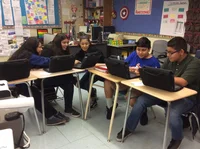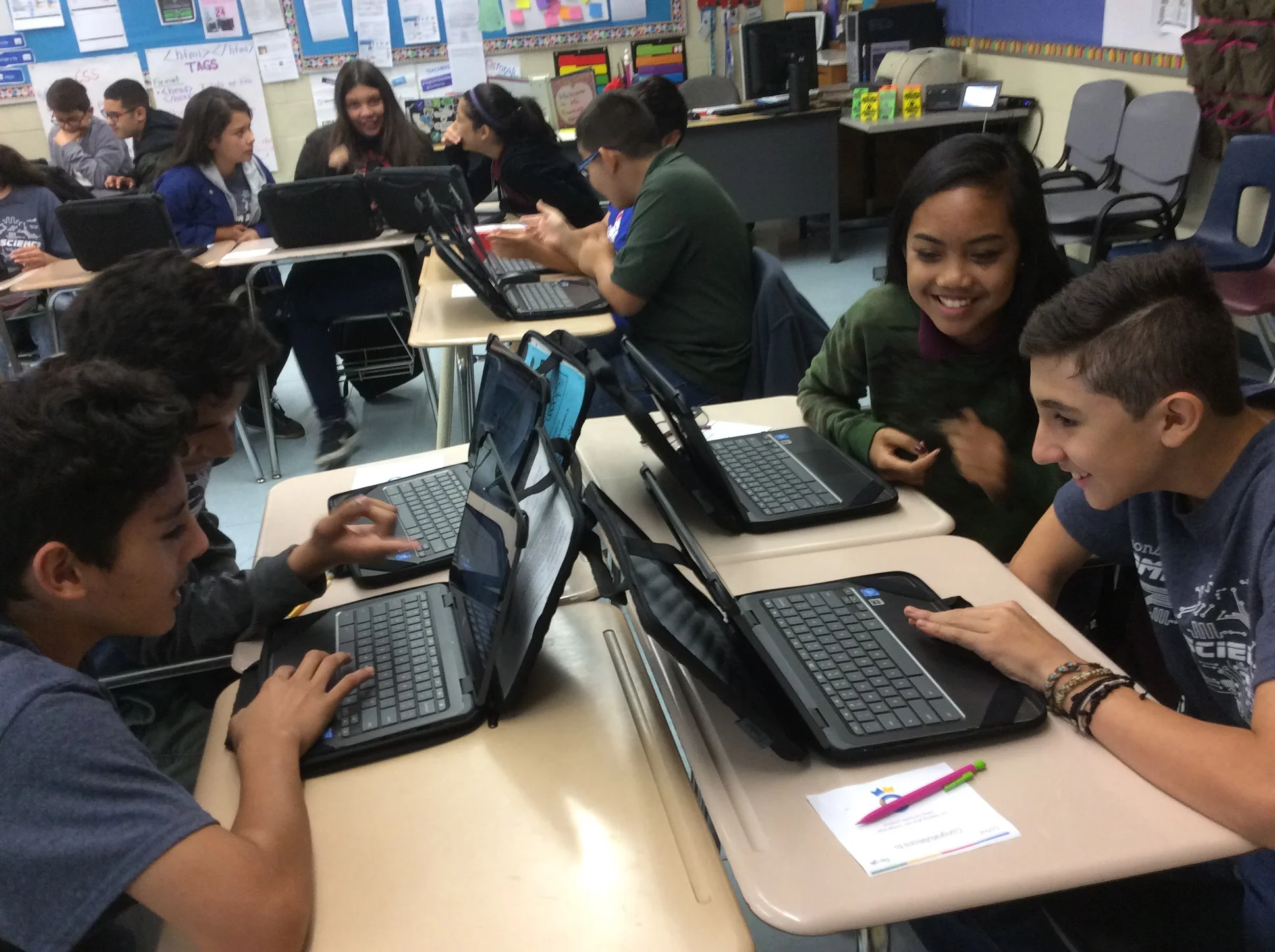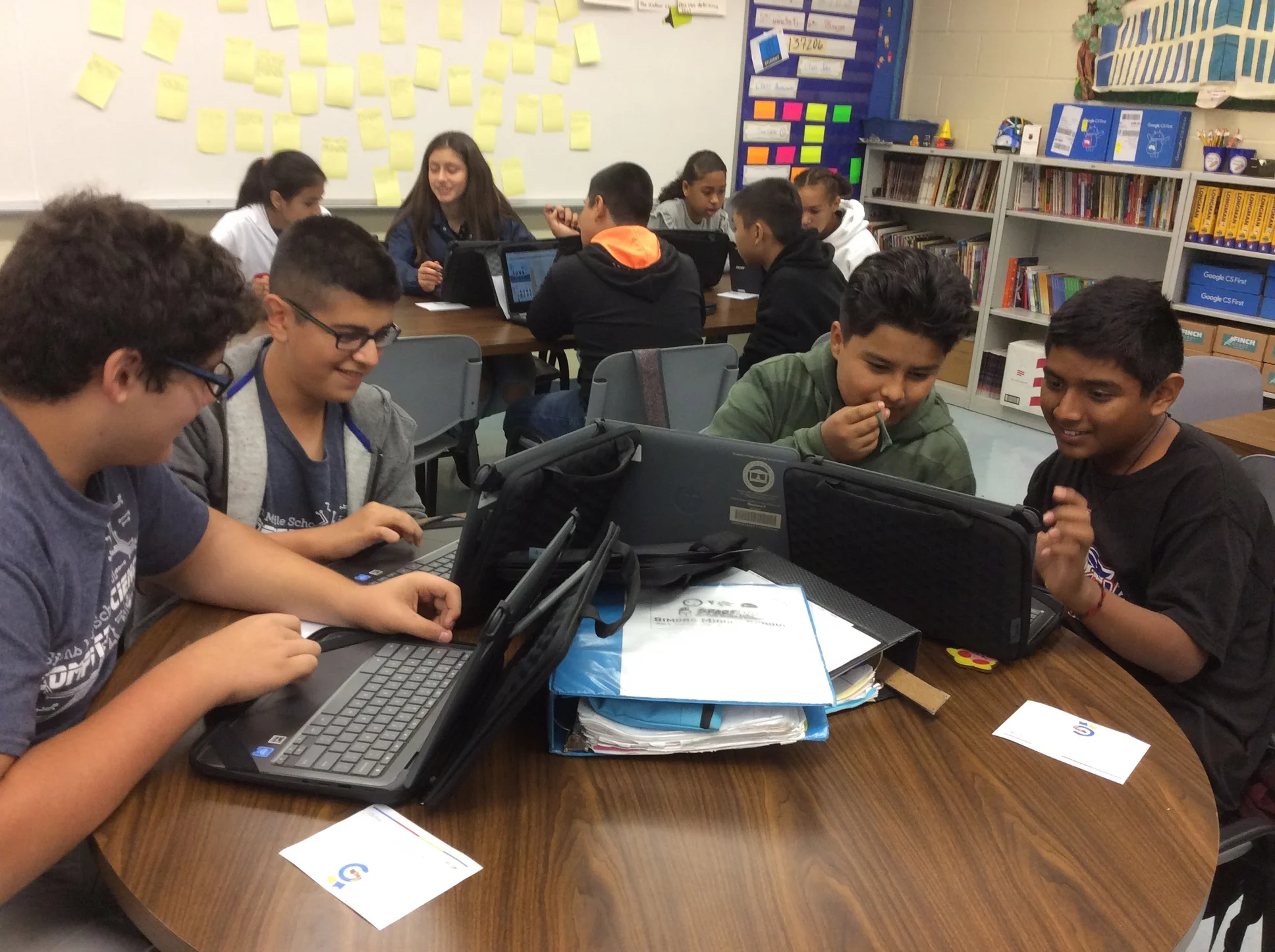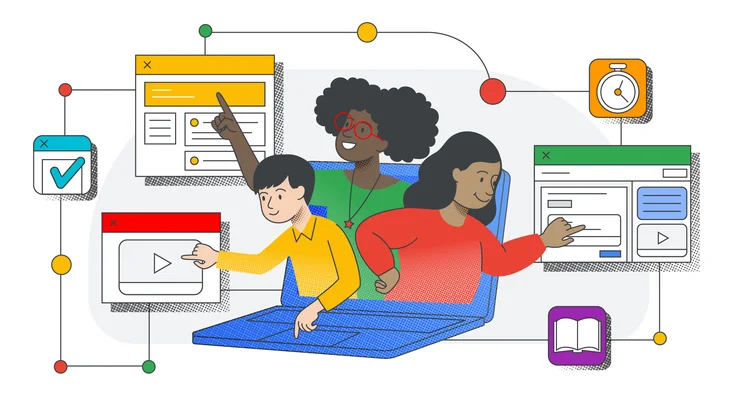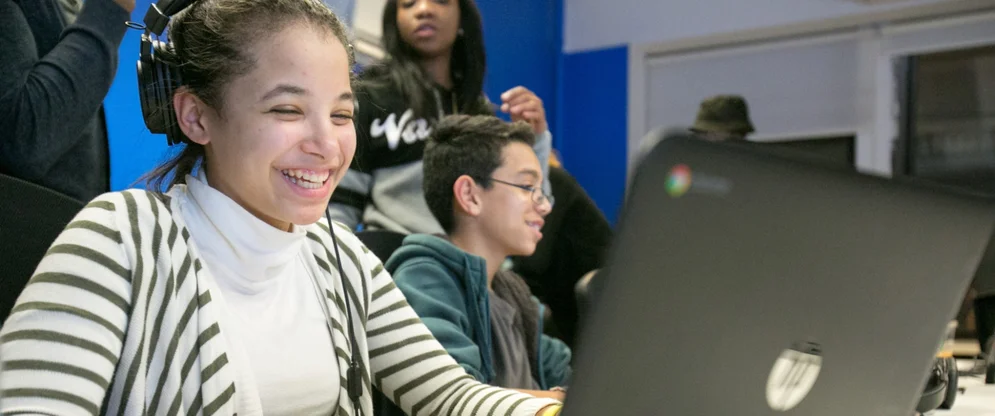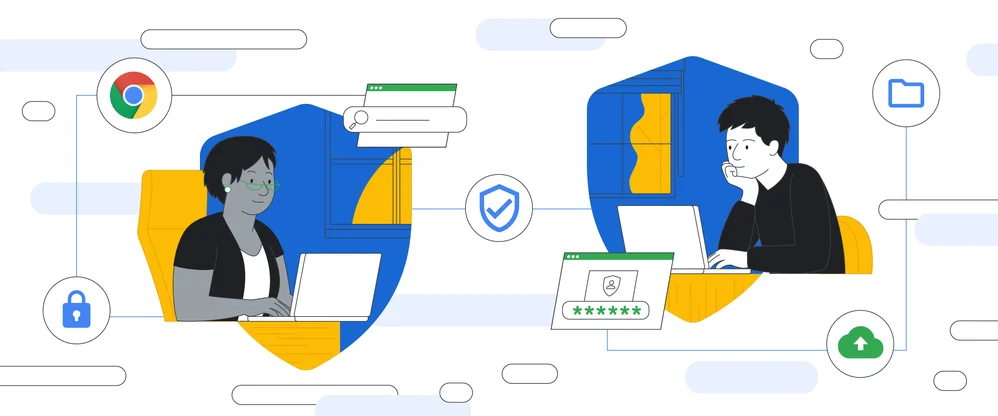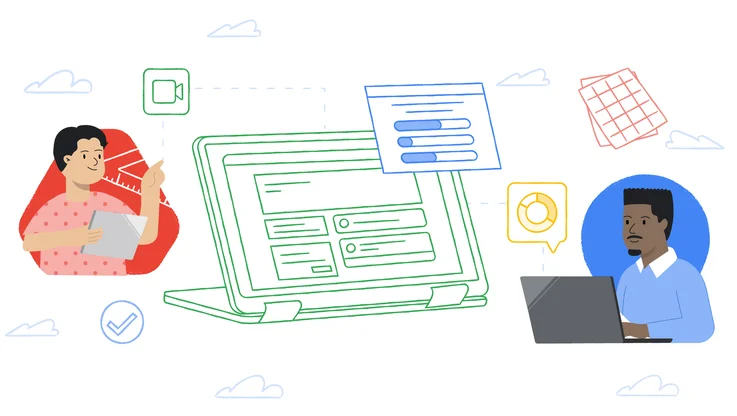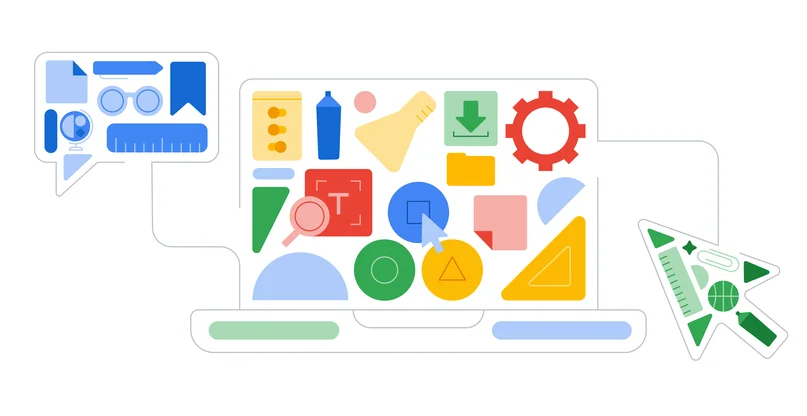There’s no failure, just opportunity: a teacher’s journey to code
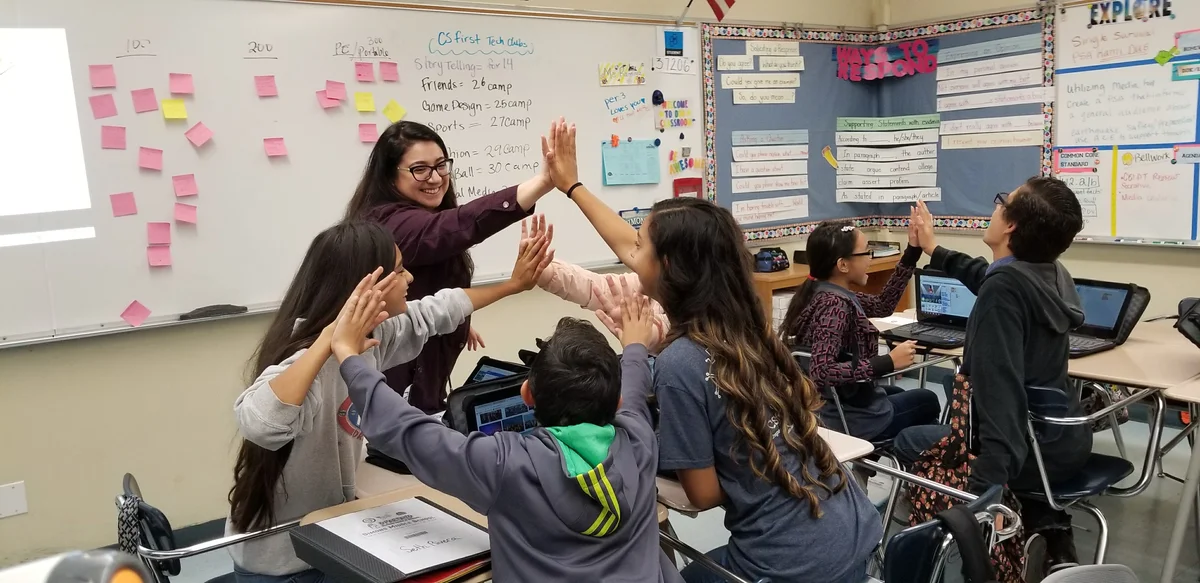
Computer Science Education Week is an annual event to get kids excited about the possibilities of coding. As a part of CSEdWeek this year, we unveiled a new coding activity that lets students create their own Google logo, using block-based coding and video tutorials. Abigail Ramirez, a middle school teacher from Pomona Unified School District, tried out the activity in her computer science classroom, and spoke to us about the activity, as well as the importance of computer science in her students’ lives.
Tell us about how you got started with coding.
When I was in the third grade, my dad bought an old computer (the kind that required giant floppy disks) and challenged my siblings and me to set it up. “Reader Rabbit”—a reading and spelling game that we liked—didn’t work properly, so we had to take out the manual, read the code, fix the code, then fix the game. We didn’t even know we were programming, we just wanted to play on the computer! Fast forward years later, my congregation needed support with our website, so I turned to YouTube and Udacity to learn more. And two months after that, I attended a week-long CS institute at Harvey Mudd College, which is where my CS education officially began.And now you teach computer science—how did you end up doing that?
I’m probably the least likely CS teacher. I’m originally an English teacher, and have the privilege of teaching at the school that I attended, which happens to be 94 percent Title I (meaning the majority of the kids have free or reduced lunch). Most of my students have college and career dreams, and they’ll be the first in their family to go down that path. While attending the CS Institute at Harvey Mudd, I realized there was so much potential in computer science. It could help build a positive future for kids who can’t see the light at the end of the tunnel, have untapped potential, or simply need access to 21st century skills.I realized there was so much potential in computer science. It could help build a positive future for kids who can’t see the light at the end of the tunnel.
Eventually, with the support of my administrator, I got the greenlight to pilot a couple of CS classes at my school. Now I teach a class called Middle Years Computer Science, which is where I tried out this year’s CSEdWeek coding activity.
How did the kids react to the coding activity?
When they found out they could design and program their own Google logo, the excitement went through the roof. Both seasoned coders and those who were new to coding came away with a sense of community and purpose. They expressed that their simple logos had the possibility of changing someone's day, putting some joy in someone's heart, inspiring people to act, and creating awareness.What are some of the most creative approaches that the kids took to completing the activity?
Kids are imaginative and innovative by nature, and when they get access to a creative tool like programming, the sky's the limit. The students created some really heartfelt logos featuring concepts celebrating foster care and adoption using broadcasting codes (this means that letters in the logo will move in some way, based on a command that you give another letter). Others created music videos, complete with Google-themed fidget spinners. Some daring students even created motion-sensor interactive games using their webcam, and experimented with food-shaped logos.How did the students work together to problem-solve during the activity?
I encourage my students to think of themselves as “lead learners,” meaning each individual has a skill, expertise, or idea to share with their classmates—and when they talk through each other’s ideas, it usually leads to an even better result. Coding gives students the flexibility to see what others are doing and immediately apply it, yet expand on it to increase their own skill. Besides, this shared experience is too awesome to keep to oneself—collaboration is a natural outcome. When something didn’t work in a manner they intended, you could see that students were using persistence and critical thinking to debug the block errors. When they were stuck, they would seek each other out as expert help.Did this activity change any perceptions of coding the kids had before doing the activity?
Coding can be scary. But if you eliminate the doubt, mix in lots of fun, and allow for collaboration, coding barriers can be debugged. From the start, we established that there is no failure in their code, just an opportunity to increase their coding and debugging abilities. In the end, the students felt a sense of accomplishment from creating a program that sprung from their imagination.How do the kids envision using computer science in the future? Have you seen their skills progress over time?
A lot of students have decided that’s the field that they want to go into. I get to be their hypemaster—I help keep the momentum going, to inspire them to pursue computer science. I also try to show them how these skills would be used out in the real world. I start each class with a “CS moment,” which is a video clip of a company that uses computer science—video gaming, for example, shows the kids that they could apply CS to things they’re already doing.How have you noticed that learning about CS has positively impacted your students?
I can see the joy radiate out of them when they’re learning and practicing. A student once said to me, “I can change the world right now, I just need to figure out the source code.” So for me, it’s all about getting them to the next step.As an English teacher, I gave my kids a voice. As a computer science teacher, I help them create their future.
And they get to decide what it is, and where they’ll go.
